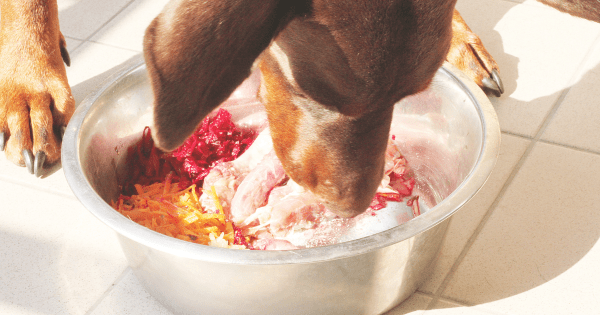Ham is a delicious treat for many people, and it’s tempting to share it with your furry friend. However, as a responsible pet owner, you need to know whether it’s safe for your dog to eat ham. In this article, we will explore the risks and benefits of feeding ham to your dog.

Understanding the Risks of Feeding Ham to Your Dog
While ham can be a tasty treat for your dog, it’s important to know that it comes with some risks. The high sodium content in ham can cause your dog to become dehydrated, and it can also lead to high blood pressure and kidney problems. Additionally, the fat content in ham can lead to obesity and digestive problems in dogs. The bones in ham can also cause choking hazards and damage to your dog’s teeth.
Understanding the Benefits of Feeding Ham to Your Dog
Despite the risks, there are some benefits to feeding ham to your dog. Ham is a good source of protein, and it contains essential vitamins and minerals that your dog needs to stay healthy. It’s also a good way to add variety to your dog’s diet and keep them interested in their food.

Tips for Feeding Ham to Your Dog
If you decide to feed ham to your dog, there are a few things to keep in mind. First, make sure to remove any bones before giving it to your dog to avoid any choking hazards. Second, limit the amount of ham you give to your dog to avoid the risks associated with high sodium and fat content. Finally, it’s important to only give your dog ham as an occasional treat and not as a regular part of their diet.
While ham can be a tasty treat for your dog, it comes with some risks. As a responsible pet owner, it’s important to understand these risks and make an informed decision about whether or not to feed ham to your dog. If you do decide to give your dog ham, make sure to follow the tips outlined in this article to keep them safe and healthy.

Additional tips for feeding ham to your dog
Apart from the tips mentioned earlier, there are a few more things to keep in mind when feeding ham to your dog. First, always make sure to choose high-quality ham that is free from preservatives, additives, and chemicals. These substances can be harmful to your dog’s health and can cause digestive problems. Additionally, choose leaner cuts of ham that are lower in fat and sodium content.
Second, avoid feeding your dog cooked ham that is left over from your meals. These may contain spices, sauces, or other ingredients that are harmful to your dog’s health. Instead, choose fresh, unprocessed ham that is specifically designed for dogs.

Third, always monitor your dog’s reaction to ham. Some dogs may have allergies or sensitivities to certain types of meat, including ham. Signs of an allergic reaction include itching, swelling, vomiting, and diarrhea. If your dog shows any of these symptoms, stop feeding them ham immediately and consult your veterinarian.
Fourth, always feed ham in moderation. Too much ham can cause obesity, diabetes, and other health problems in dogs. As a general rule, ham should not make up more than 10% of your dog’s daily diet.
Finally, always provide fresh, clean drinking water for your dog. This will help prevent dehydration and other health problems that may be associated with feeding ham.
Conclusion
Feeding ham to your dog can be a tasty and nutritious treat, but it’s important to understand the risks and benefits. By following the tips outlined in this article, you can make an informed decision about whether or not to feed ham to your dog. Remember to always choose high-quality, unprocessed ham, and to feed in moderation. If you have any concerns about your dog’s health or diet, consult your veterinarian for advice.

SEE ALSO: The Loyal Dog Who Refuses to Let Owner Ride Elevator Alone: Heartwarming Video Goes Viral
